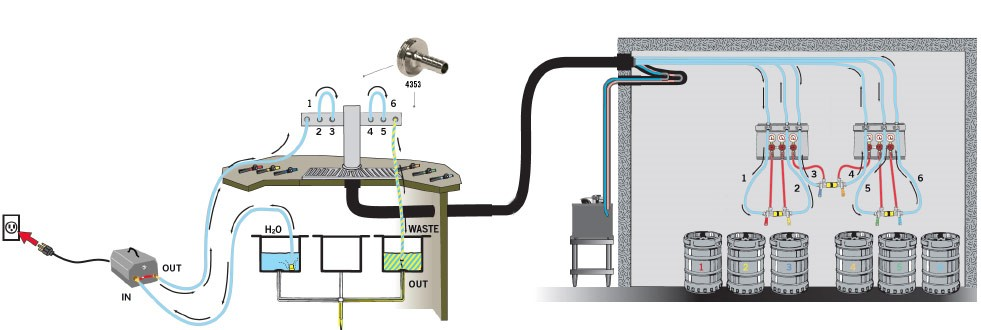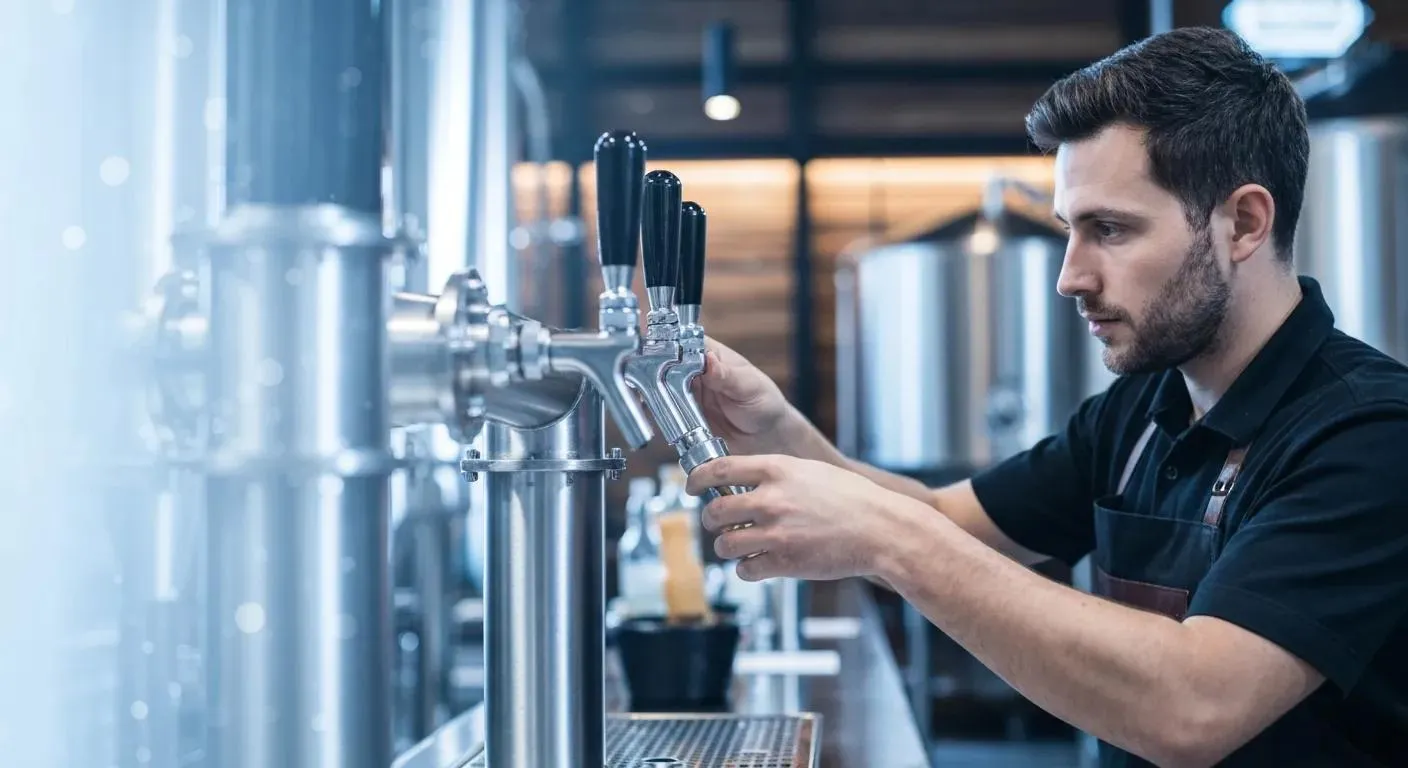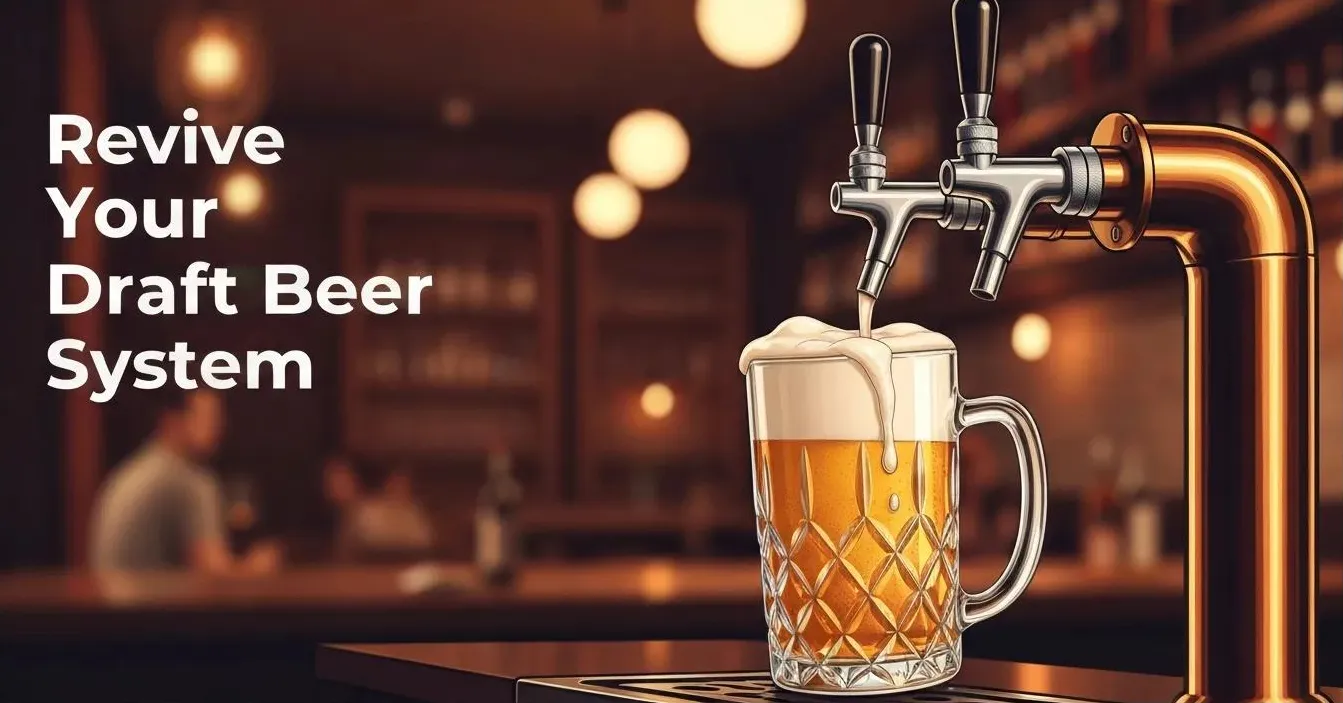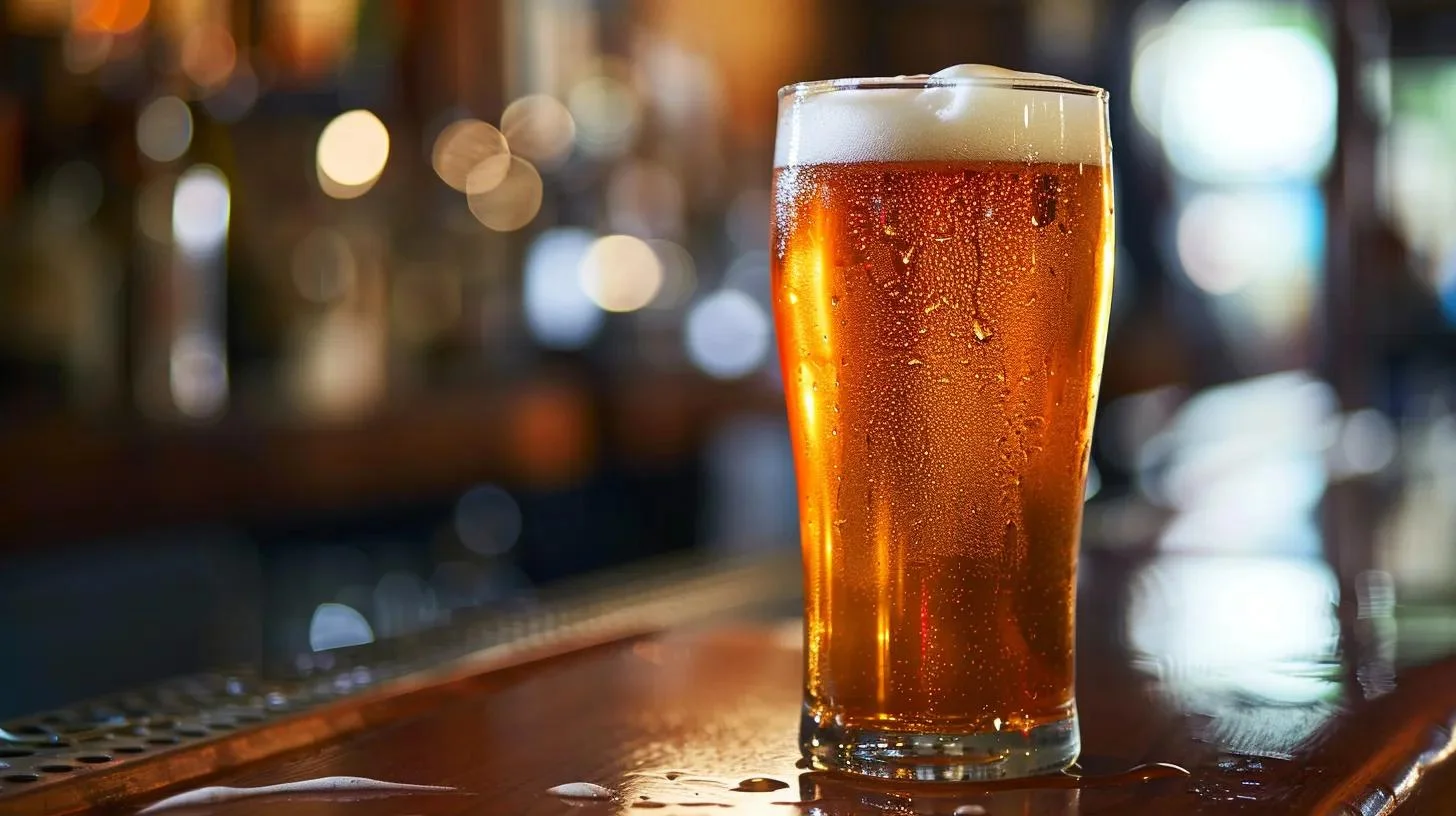Brewery Taps: Unveiling the Craft of Perfect Pour Dynamics

Brewery taps play an essential role in the serving of draft beer, acting as the critical point where the beverage transitions from keg to glass. The taps are a familiar sight in breweries and bars alike, where a variety of beer styles are poured with the pull of a handle. Precision in design and function allows taps to deliver beer with the optimal level of carbonation and flavor that brewers intend for their creations.
The intricate anatomy of a brewery tap system involves more than the taps themselves; it includes kegs, lines, regulators, and couplers working in unison to maintain the quality of the beer from the barrel to the pint. Regular cleaning and maintenance are vital to prevent contamination and off-flavors, while advancements in tap technology provide more control over pouring and foam, enriching the customer's drinking experience. For homebrewers, optimizing these systems can bring the craft of brewery-quality draft beer into the comfort of home.
Key Takeaways
- Brewery tap systems are a key component in delivering high-quality draft beer.
- Maintaining and cleaning tap systems is crucial for preserving beer flavor and freshness.
- Technological progress in tap systems allows for better pour control and enjoyment at home or in commercial settings.

The Anatomy of a Brewery Tap System
Understanding the anatomy of a brewery tap system is essential for proper setup and maintenance. Each part plays a critical role, from the type of materials used to the design of the system, influencing the overall quality of the draft beer dispensed.
Key Components
A brewery tap system primarily consists of a tap handle, a faucet, and a shank on a beer tower. The faucet controls the release of beer and can be found at the end of the shank. Inside the system, the keg coupler attaches to the snake keg, creating a seal that allows for the flow of beer. This coupler is often connected by a beer line, usually vinyl, but there are better types of beer line such as Xtraflexmaster Tubing or (XFM).

- Keg: Stores the beer, connected via a valve to the tap system.
- Faucet (Beer Tap): The endpoint where beer is dispensed, may include a flow control mechanism.
- Shank: Connects the faucet to the system.
- Secodary Regulators: Controls the Applied pressure to the keg.
- Primary Regulators: Control the Gas pressure entering the system. Usually set around 80-100 PSI.
- Beer Trunk Line: The tubing transporting beer from keg to faucet, often insulated or wrapped in glycol coils to maintain temperature. For Remote Systems.
- Beer Line: Used to connect Keg Couplers to the rest of the draft system.
- CO2/Nitrogen Tanks: Supply the pressurized gas (carbon dioxide or nitrogen) that propels beer from keg to glass.
Materials play a pivotal role, with components typically fabricated from stainless steel, or chrome-plated brass, each offering distinct advantages concerning taste, durability, and cleanliness.

Material Considerations
Stainless steel is renowned for its longevity and resistance to corrosion, making it the preferred choice for dispensing equipment. . Chrome-plated brass presents a mid-range option, providing some of the durability of stainless steel with the cost-effectiveness of brass, though the plating may wear over time.
- Stainless Steel: Durable, does not easily corrode, ideal for preserving beer flavor. Best in the industry.
- Chrome-Plated Brass: Aesthetically pleasing, but may require more replacement over time.

Design Types
Brewery tap systems can range from rudimentary single-faucet setups to complex, multi-tap towers. Some utilize a glycol cooling systemto maintain beer at a consistent temperature from keg to glass, which is essential for draft quality. Additionally, the CO2 or nitrogen used to push the beer through the system is pivotal—carbon dioxide is common, but nitrogen or a CO2/nitrogen blend might be employed for certain beer styles, such as stouts, imparting a creamier texture and tighter bubbles.
- Flow Control Faucets: Offer more precise control over beer flow, reducing the risk of foam.
- Glycol-cooled Systems: Maintain constant beer temperature, from keg to faucet, especially over longer distances.
- Gas Blend Systems: Utilize CO2 or nitrogen blends for optimal carbonation and mouthfeel for specific beers.
The Science of Pouring
Pouring a pint of beer is not just a simple action; it involves a precise mix of technique and understanding of how carbonation affects the dispense. Mastering the pour ensures the drinker experiences the best flavor and aroma from their beer.

Achieving the Perfect Pour
The perfect pour is a balance of the right amount of foam—or head—and beer in a glass. The objective is to create about one to two inches of foam, depending on the style of the beer. Properly poured, the foam cap acts as a protective blanket, keeping the beer's volatiles inside the glass, and enhancing both aroma and flavor.
- Flow Control: Adjusting the flow rate is critical.

- Too fast, and the beer will splash against the bottom of the glass, creating excessive foam.
- Too slow, and the beer may under-foam, leading to a flat-tasting experience.
- Glass Tilt: Begin with the glass at a 45-degree angle, slowly straightening it as the glass fills.
- Stop Point: Cease pouring when the desired head size is achieved, usually just as the liquid reaches the top of the glass.
Understanding Carbonation
Carbonation is the presence of carbon dioxide (CO2) in beer, which affects not only the taste but also the level of foam produced during pouring.
- Level of Carbonation: Beers have varying levels of natural carbonation, depending on the fermentation process. Knowing how carbonated your beer is can dictate how to adjust your pouring technique.
- Temperature and Pressure: These factors influence carbonation. Cold beer can hold more CO2, so a warmer beer can result in more foam when poured.
Cleaning and Maintenance
Maintaining the quality of craft beer served is directly linked to the rigorous cleaning and maintenance of brewery taps. Regular and proper cleaning is essential to prevent the buildup of mold, bacteria, and beer stone, which can affect the beer's taste and freshness.
Regular Cleaning Protocols
Frequency: Brewery taps should undergo a thorough cleaning at least every two weeks. This includes disassembling and manually cleaning each component.
- Disassembly: Begin by disconnecting the keg and removing the faucet and parts of the tap system.
- Cleaning Solutions: Use a brewery-approved cleaning solution that effectively removes beer stone and other residues.
- Contact Time: Allow the parts to soak for the amount of time specified by the cleaning solution manufacturer.
- Rinsing: After soaking, rinse all components with clean water to remove any remaining solution.
Inspection: Post-cleaning, inspect the line, faucet, and keg coupler for any signs of wear or corrosion and replace as necessary.

Addressing Common Contaminants
Mold and Bacteria: These are commonly found in areas exposed to moisture and beer residue.
- Components Affected: Check the faucet, keg coupler, and line regularly for any visible signs of these contaminants.
- Sanitization: After cleaning, sanitize all components to ensure the elimination of microorganisms.
Corrosion: Metal parts are susceptible to corrosion, which can lead to off-flavors in the beer.
- Regular Checks: Inspect metallic parts during each cleaning cycle for any signs of corrosion and clean or replace parts as required.
- Preventive Measures: Use only appropriate, non-corrosive cleaners and keep the tap system dry when not in use.
By following these cleaning and maintenance protocols, breweries can assure the quality and safety of their beer while extending the lifespan of their tap systems.
Advancements in Tap Technology
In the dynamic world of brewing, tap technology has seen significant innovations, particularly with the integration of smart systems and improved mechanisms for dispensing beverages. These advancements and similar technologies aim to enhance the beer experience for both the vendor and the consumer.
Innovations in Dispensing
Recent developments in tap technology introduce mechanisms like forward sealing, which help maintain hygiene and reduce beer wastage. Unlike traditional taps, forward-sealing faucets keep the internal parts from being exposed to air, mitigating the risk of beer contamination and ensuring a fresher pint. Additionally, the industry has seen the rise of nitro taps and stout taps, designed to deliver creamy and smooth pours that are characteristic of stouts and nitro-infused beers. These specialized taps use a restrictor plate to agitate the beer, creating a cascading effect and a luxurious mouthfeel.
Smart Tap Systems
With the advent of smart technology in the beer industry, smart tap systems have changed the way data is utilized at the point of sale. These systems are transforming existing beer taps into intelligent devices that provide essential, real-time information about consumption patterns, inventory levels, and customer preferences. Moreover, flow-control technology allows bartenders to adjust the flow rate and reduce foam, resulting in a perfect pour every time. Some smart taps even incorporate self-closing features to further minimize waste and spillage, making operations more efficient and eco-friendly. The integration of these technologies speaks to a future where the tap system is not just a delivery mechanism but a critical part of the beer industry's data collection and customer satisfaction strategies.
If you have any other questions please reach out to us at Renny's. Lastly, for more information regarding draft beer dispensing check out our beer education blog.



